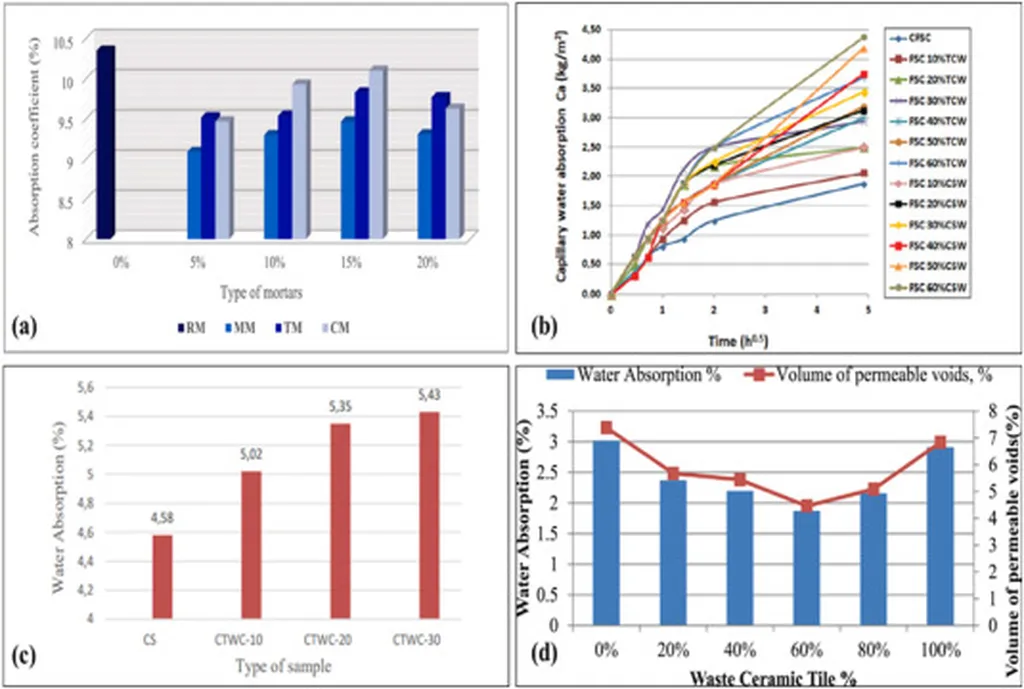In a significant stride towards sustainable construction materials, researchers have compared the mechanical performance of ceramic composites reinforced with polymer waste and sawdust, offering promising insights for the energy sector. The study, led by Festus Ben from the Centre for Nanoengineering and Advanced Materials at the University of Johannesburg, was recently published in *Discover Materials*, which translates to *Otkritie Materialov* in English.
The research focused on the potential of agro-industrial waste to enhance ceramic materials, addressing both economic and environmental concerns. Ben and his team investigated the mechanical properties of ceramic composites reinforced with polyethylene terephthalate (PET) polymer waste and sawdust residues within a termite clay matrix. The composites were fabricated by reinforcing a 40 wt% termite hill clay matrix with varying amounts of either PET or sawdust, up to 10 wt%.
The findings revealed distinct advantages and limitations for each additive. PET-clay composites exhibited higher porosity, reaching up to 43.1%, and lower bulk density. Their compressive strength peaked at 4.8 MPa with 2 wt% PET reinforcement. In contrast, sawdust-clay composites demonstrated moderate porosity, up to 33.3%, and superior compressive strength, achieving 5.2 MPa at 2 wt% sawdust.
“Sawdust-clay composites outperformed PET-clay composites in compressive strength across all reinforcement levels, maintaining better structural stability and strength retention,” Ben explained. This suggests that sawdust-reinforced ceramics are more suitable for applications requiring moderate strength and structural integrity, while PET-reinforced ceramics are better suited for lightweight applications.
The implications for the energy sector are substantial. As the demand for sustainable and energy-efficient building materials grows, these eco-friendly ceramic composites offer a viable alternative to traditional materials. The use of agro-industrial waste not only reduces environmental impact but also provides a cost-effective solution for construction.
“This research highlights the potential of agro-industrial waste as a valuable resource for enhancing ceramic materials,” Ben noted. “It opens up new avenues for sustainable construction practices and could significantly influence the future of the energy sector.”
The study’s findings could shape future developments in the field by encouraging further exploration of bio-based additives in ceramic composites. As the construction industry continues to seek innovative and sustainable solutions, the insights from this research provide a solid foundation for advancing eco-friendly materials.
By leveraging the unique properties of sawdust and PET, researchers and industry professionals can develop materials that meet the demands of modern construction while minimizing environmental impact. The comparative analysis conducted by Ben and his team offers valuable guidance for selecting the appropriate additive based on specific application requirements, ultimately contributing to a more sustainable and efficient energy sector.

